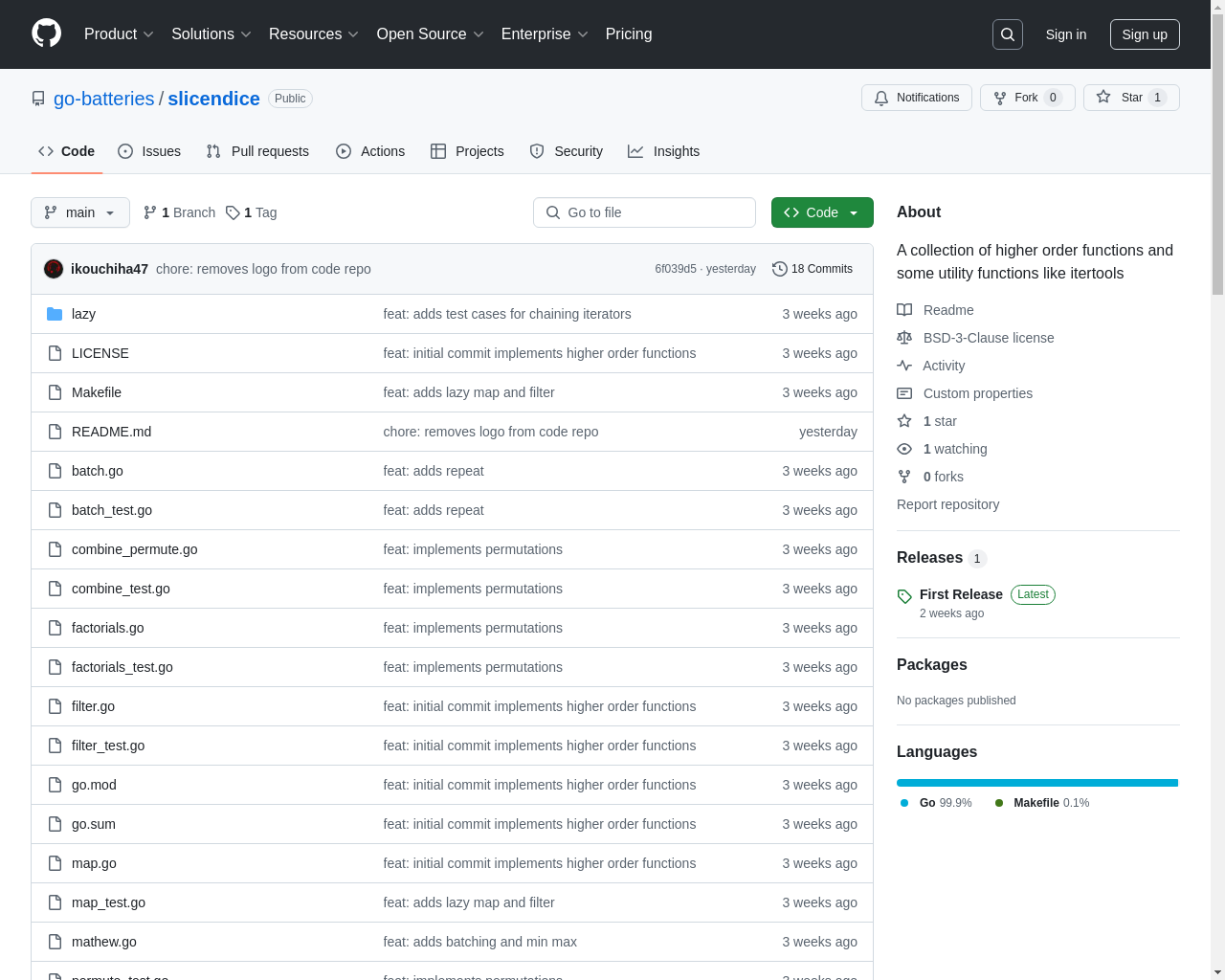

Highlight 1
The library provides a comprehensive set of utility functions, which significantly reduces the need for boilerplate code in slice manipulations.
Highlight 2
The performance of the library has been optimized for speed, making slice operations faster compared to manual implementations.
Highlight 3
The project is open-source, inviting collaboration and contributions from the developer community, which keeps it updated and versatile.

Improvement 1
The documentation could benefit from more detailed examples and use cases to help users understand how to implement the functions effectively.
Improvement 2
The library would be enhanced by additional testing for edge cases to ensure robustness in diverse scenarios.
Improvement 3
It could include better error handling mechanisms to provide users with more informative feedback during slice operations.
Product Functionality
Consider expanding the library by adding more advanced data manipulation functions, such as union, intersection, and difference for slices.
UI & UX
Enhance the website’s UI/UX by simplifying navigation and increasing the visibility of documentation and examples on the homepage.
SEO or Marketing
Implement a blog section with articles and tutorials that showcase practical uses of Slicendice to attract a larger audience and improve search engine visibility.
MultiLanguage Support
While not essential for a code library, offering documentation in multiple languages could help non-English speaking developers to adopt the library more effectively.
- 1
What programming language is Slicendice designed for?
Slicendice is designed for the Go programming language.
- 2
How can I install Slicendice?
You can install Slicendice by using the 'go get' command followed by the repository URL.
- 3
What kinds of slice operations can Slicendice help with?
Slicendice provides helper functions for a variety of operations, including filtering, mapping, and reducing slices.
